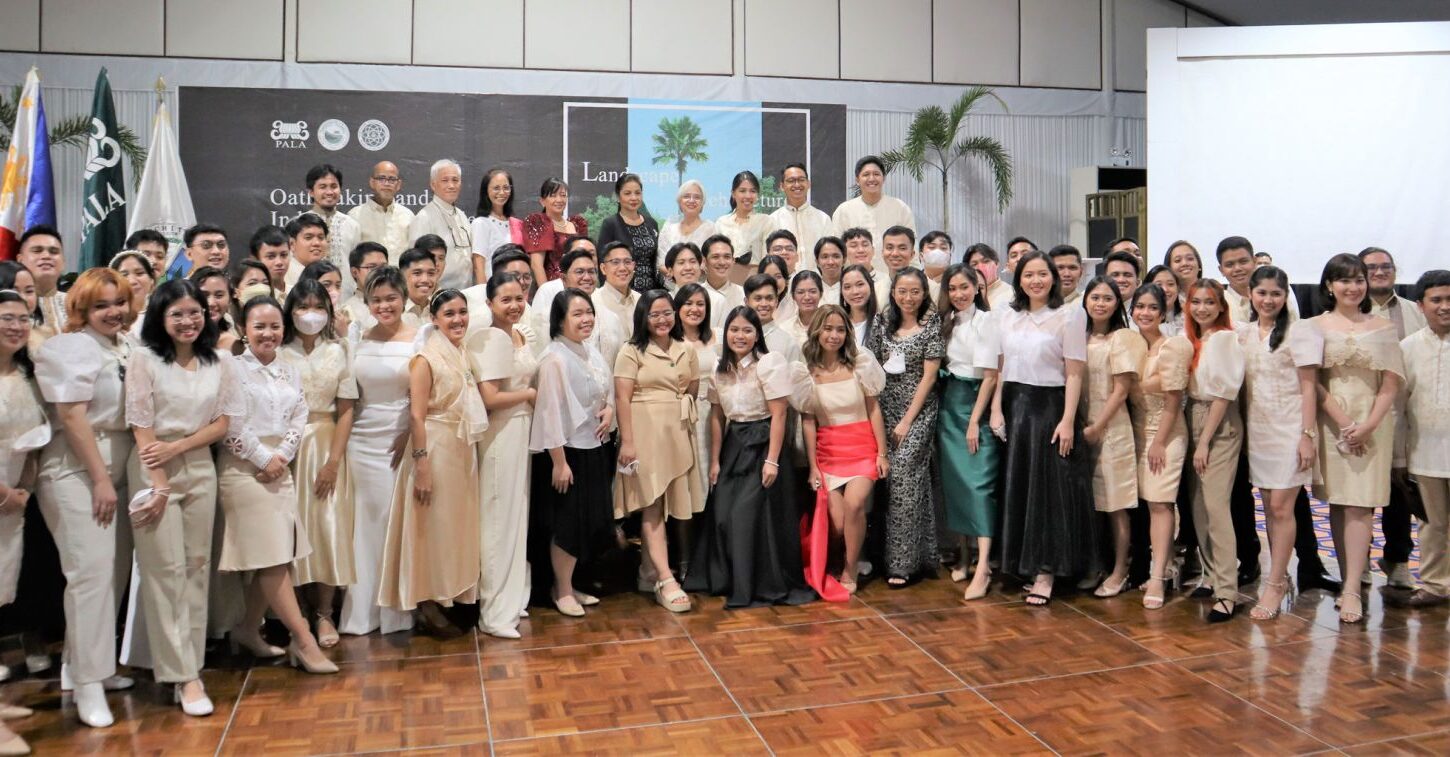ASEAN exec urges new Ph landscape architects to design green and healthy public spaces

Members and inductees of the Philippine Association of Landscape Architects with guest speaker, Dr. Theresa Mundita S. Lim, ACB Executive Director
PASAY CITY, PHILIPPINES — Passers of the 2022 Landscape Architecture Licensure Examination took oath as the newest addition to the Philippine Association of Landscape Architects during its 45th anniversary celebration.
Landscape architecture encompasses the study, design, planning, and development of built and natural environments to meet the needs of communities. With the increasing focus on sustainability and environment conservation, the need for landscape architects in designing a better and more resilient future is likewise growing.
Dr. Theresa Mundita S. Lim, a wildlife veterinarian and the executive director of the ASEAN Centre for Biodiversity (ACB), sought the new landscape architects’ support in creating more sustainable and resilient cities and communities. “Your profession has made you a frontliner to restoring the beauty and functionality of dull and degraded lands. The rich and unique biodiversity of the Philippines and the ASEAN region provides you a natural mental playground that can serve to feed your creativity and your desire to innovate,” Lim said during the Induction Ceremony, where she served as the guest speaker.
Designing a greener future
Studies have already established the direct link between one’s exposure to a healthy environment and human health. In the cases of therapeutic gardens in Singapore, key findings of the study on landscapes and mental well-being showed that exposure to therapeutic gardens displayed potential for mood improvements and less strenuous brain activities that hold a reasonable premise for depression treatment.
Lim provided concrete ways how landscape architects can design aesthetic public spaces while keeping nature intact.
She encouraged the new inductees to harness the beauty and potential of native species of plants and trees in designing landscapes. Unlike exotic species, native species are well adapted to the natural conditions of the area making them easier to maintain and nurture. They also serve as hosts to good pollinators and insects that contribute to ecosystem balance and health. Lim likewise recommended obtaining plants and ornamentals that are locally propagated from legitimate sources.
Integrating biodiversity in infrastructure and in other development sectors is among the priorities of the ACB. The link between nature, health, economy, and other sectors has become more and more apparent, especially in the face of the COVID-19 pandemic.
The ASEAN nations, in partnership with the ACB, are continuously pushing for greener, healthier, and more sustainable cities.
“We now see huge and expanding pockets of synergy: patches of grays, intimately connected by corridors of greens, accentuated with bright yellows, vibrant reds, and stark blues that can be found in the avifauna that inhabit the forest parks,” Lim said.
Aside from Singapore, Thailand opened a forest park that features walking and cycling paths, bird-watching spots, and nature trails and has a capacity of 10,000 visitors per day. Landscape architects designed the park by using original trees and adding more trees as nesting and resting places of various avian species.
Emphasising that young Filipino landscape architects have a special niche in designing a better and resilient future, Dr. Lim ended her message by encouraging them to become strong, essential foundations of a sustainable and healthy nation, by using their skills, knowledge, and talent, their love for nature, and their value for biodiversity.
#
